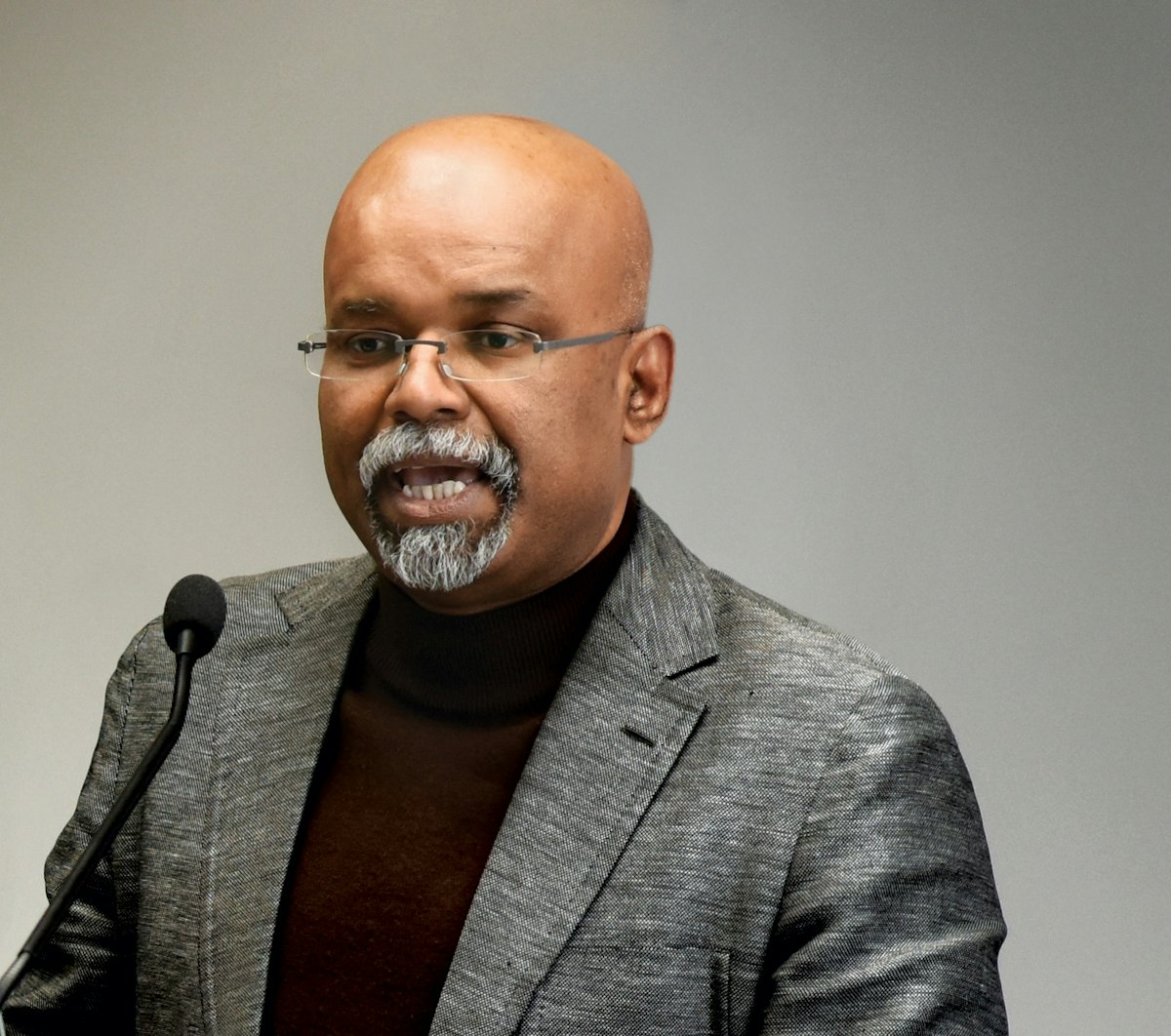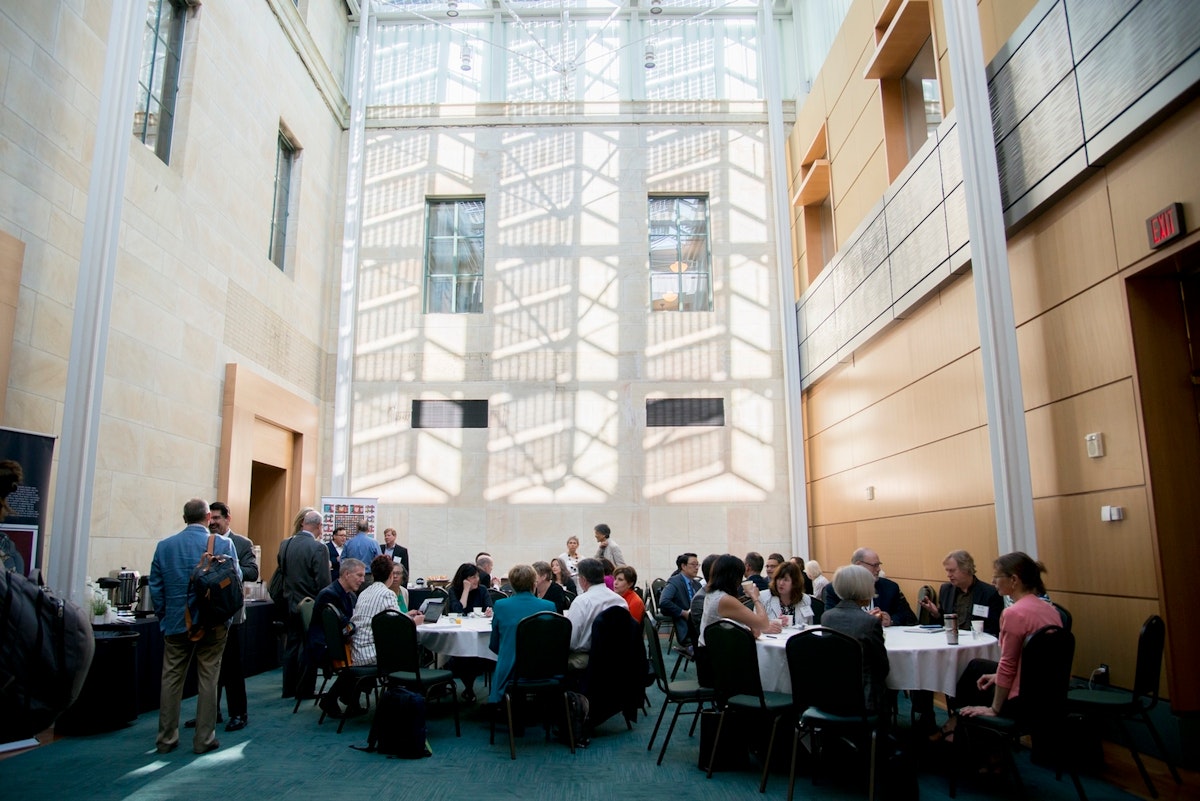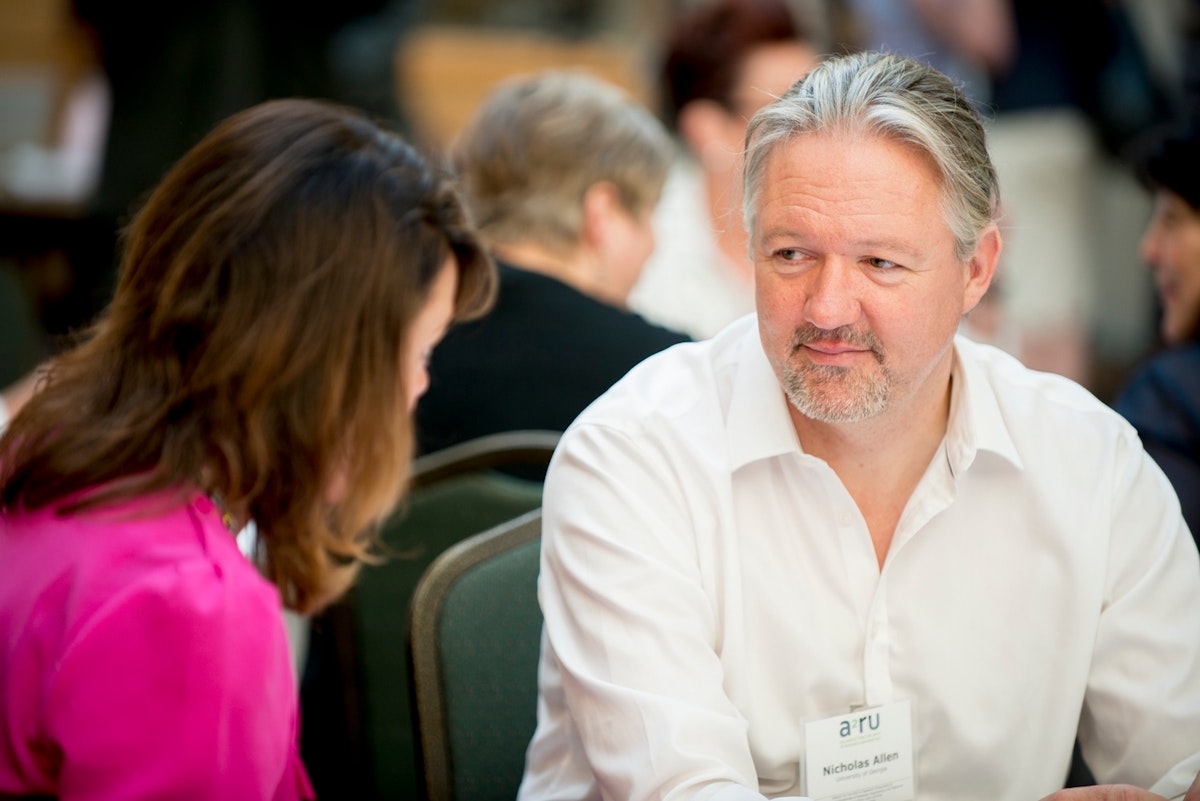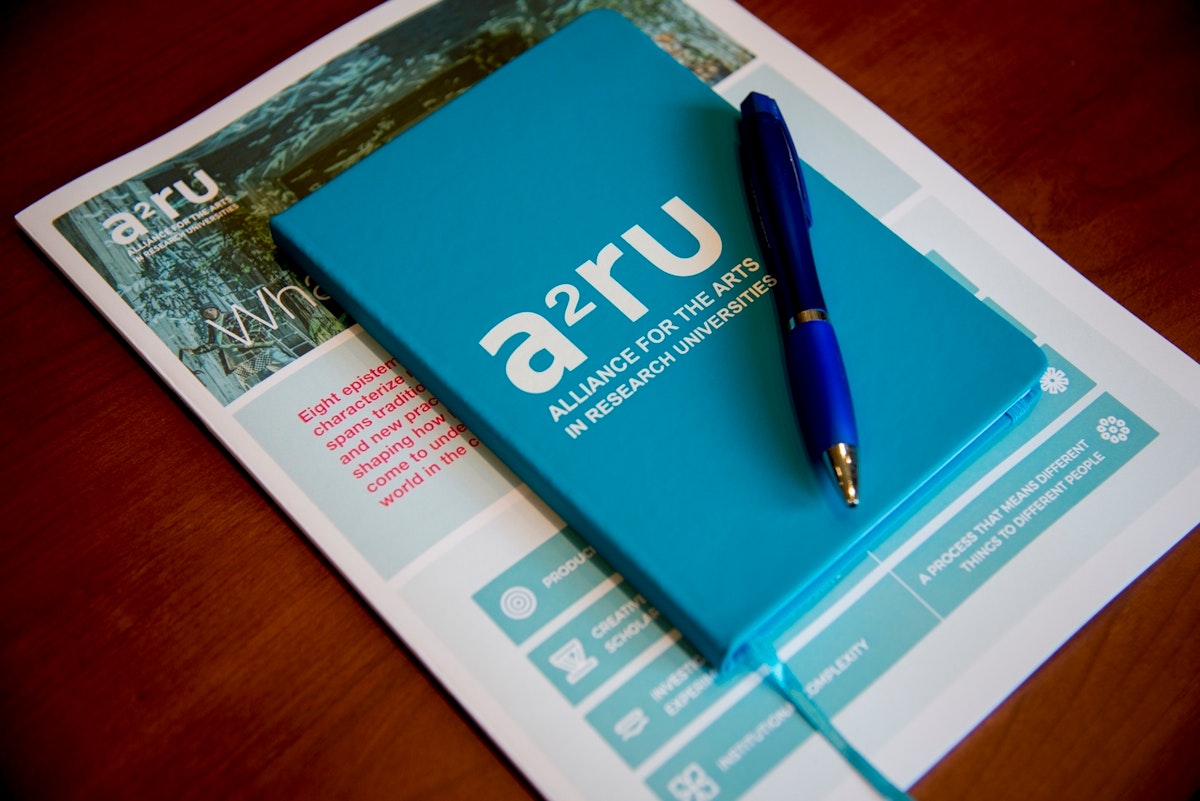Guna Nadarajan at National Academies’ Convocation
Led by Stamps School Dean Guna Nadarajan, a panel explored the benefits of integrating the arts and design in STEM education to a crowd of 300 at the National Academies of Sciences, Engineering and Medicine (NASEM) in Washington, DC.

The April 12 session, “Successfully Integrating the Arts and Humanities in Higher Education” also featured University of Georgia’s (UGA) Nicholas Allen who heads their humanities institute; Jill Sonke, who directs the Center for Arts and Medicine at the University of Florida; and U-M professor of biomedical, entrepreneurship and engineering education, Aileen Huang-Saad. They each provided examples of successful integration of arts and design in science, technology, engineering, math and medicine in higher education.
The Convocation marks a culmination in the dissemination of Branches from the Same Tree: The Integration of the Humanities and Arts with Sciences, Engineering, and Medicine in Higher Education, one of the top five downloaded from the Academies this year. Nadarajan served on a 22-person expert committee who authored the report, organized by The National Academies of Sciences, Engineering, and Medicine. The committee was tasked with researching the effect of integrating the humanities and arts into STEMM fields (science, technology, engineering, mathematics, and medicine) in higher education.
David Skorton, secretary of the Smithsonian Institution and chair of the report, opened the convocation. Discussions for the daylong convocation were based on this detailed, evidence-based work to describe the known impact of integrative approaches to teaching and learning in higher education on students’ academic performance and career readiness.

According to the report: “aggregate evidence indicates that some approaches that integrate the humanities and arts with STEM have been associated with positive learning outcomes. Among the outcomes reported are increased critical thinking abilities, higher-order thinking and deeper learning, content mastery, problem solving, teamwork and communication skills, improved visuospatial reasoning, and general engagement and enjoyment of learning.”
During the convocation, Huang-Saad echoed this sentiment with her own experience of the positive learning outcomes associated with an integrative approach: “Like most high school students, I chose my intended career path based on very little. I was good at math, I didn't love reading, but I wanted to help people." Based on this, Huang-Saad landed on a career path towards biomedical engineering. “However, if you look at my career, what has set me apart and helped me progress through my career is my non-technical skills,” Huang-Saad said.
So after over ten years in industry, Huang-Saad came back to the University of Michigan academics and has been focusing on finding ways to support the professional development of engineers. Over the past twelve years, all three of the initiatives she has launched at University of Michigan have been interdisciplinary in nature, with the focus of transforming engineering education to include the professional development of students — all of which leverage and integrate the arts and humanities, including the Biomedical Engineering Design program, Entrepreneurship and curriculum design. Additionally, Huang-Saad serves on the curriculum council for ArtsEngine, an interdisciplinary program supported by the Stamps School and four other colleges on North Campus.

Allen, head of UGA’s Willson Center for Humanities and Art spoke at the convocation about how humanities research has undergone a public facing transformation in the past two decades and is now a world leader in applied humanities thinking: “[W]e have created the conditions for funding, delivering and measuring the educational and cultural impacts of teams of a spectrum of activity that is based in deep disciplinary scholarship.” He went on to say that this transformation has had “most impact at the fringes of the major public research institutions, through research centers, institutes and dedicated programs.”
One of these centers is the University of Michigan’s Center for Entrepreneurship, and another example is the University of Florida’s Center for Arts in Medicine has bridged the arts, humanities and health sciences which offers graduate and undergraduate level degree and certificate programs in arts in medicine, and also now offers five combined degrees that allow students to earn dual undergraduate and graduate degrees that pair music and dance with arts in medicine and also pair chemistry, biology, biochemistry, public health, and health sciences with arts in medicine.

Nadajaran continues to work on a National Science Foundation funded initiative, Network for Science Engineering, Art and Design, to develop and support a national network for collaborative research, education, and creative practice between sciences, engineering, art, and design.
The discussion will continue on May 28th at U-M, as Tom Rudin from the NASEM will present on the report and campus leaders will host a series of discussions and workshops about the Integration of STEM and the humanities and arts at Michigan. Presenters include Ron Eglash, professor at Stamps and the U-M School of Information and Jane Prophet, Stamps Associate Dean for Research, Creative Work, and Strategic Initiatives.

For registration and details, visit a2ru.org/events/michigan-town-hall.
Learn more about the report and convocation.
To follow the ongoing conversation about the report, visit #a2ruBranches on Twitter and facebook.com/NationalAcademies.
Banner photo: Irene Ngun